What is Energy?
Energy is a freeform, colorful "marking" that every spirit must have. It represents a literal "window" into the spirit's body, displaying the myriad colors flowing within them. Energy may be any mix of any color in existence, be they neons, greyscale, black, pure white, and more. Energy can take on the shapes of filigree, swirls, bands, stripes, or even mimic some other markings in both coverage and shape! The only thing Energy cannot do is take on unnatural, inorganic shapes -- this means it can't replicate manmade structures or objects. Otherwise, the sky is the limit on what you can do with Energy (you know, except for the default color and coverage restrictions as determined by type and mutations).
By default, energy is symmetrical on both halves of the body, and must appear above all over markings and cannot be affected by sparkles, shines, or sheens. Because it's literal energy, it must also present with a glow by default, regardless of the background used for the import. Please keep in mind that in art, if the import shows glowing energy, points will be docked if energy is not glowing during night time scenes, but not for daytime scenes since glow effects are harder to see in sunlight.
Here are some examples of glow effects that we accept...
As well as ones we do not accept.
Below is the information on energy for both species, as well as visual references for their coverage and mutations.
Kiji-specific Rules
Coverage
Energy works differently between kijikaiaku and subtalleons. For kiji, the energy is restricted to the main body unless there are energy mutations. By default, this blue range is where energy is allowed on Kiji:
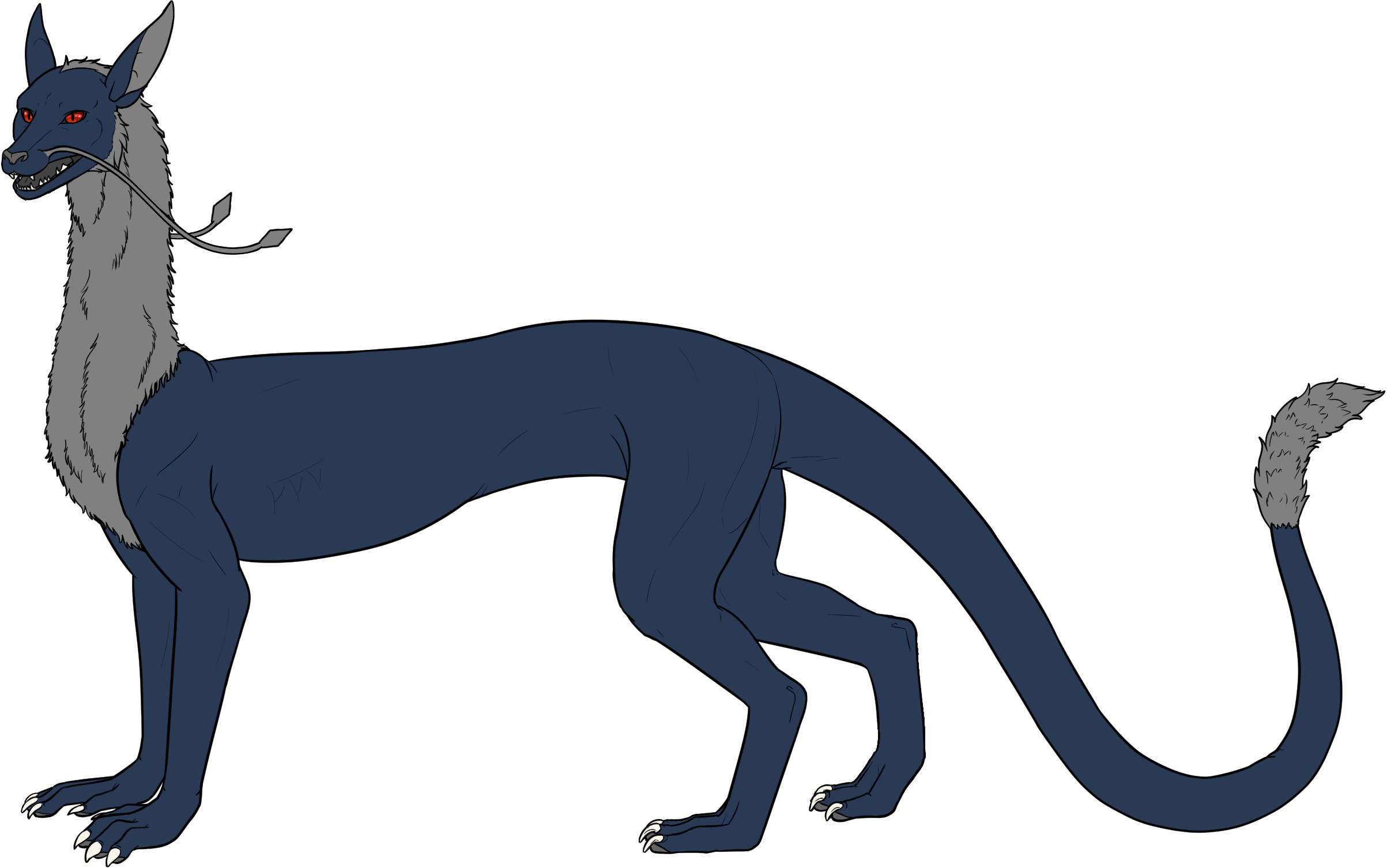
This range excludes any mutations minus some unique body modifying mutations.
Please note that Energy for kijis is always flowing and in motion by default, meaning that despite what a kiji's import shows, if there's more than one color, that energy must always be shown in different spots within its boundaries. Think of it like a tye-dyed river, and you're watching it move through a narrow window.
To be clear, it's the colors of Energy that move and flow; the design and bounds of the Energy marking itself does not shift out of place. Additionally, if there's only one color, there's no need to show the motion, obviously.
As for how the colors move, that's entirely up to you, the player. As long as, by default, all colors in the design hit all areas energy is present, the flow can be top to bottom, following body contours, random swirling, or any other movement you desire. This also means the colors inside the energy can be hard edged, soft edged, blended, or mixed.
While we don't require it, you can submit an additional image with the energy shown in different positions if you'd like. You also do not have to specify how the energy moves upon submission.
Types
A kiji's energy type is coverage-based. It refers to how much total energy is on the design, not the colors.
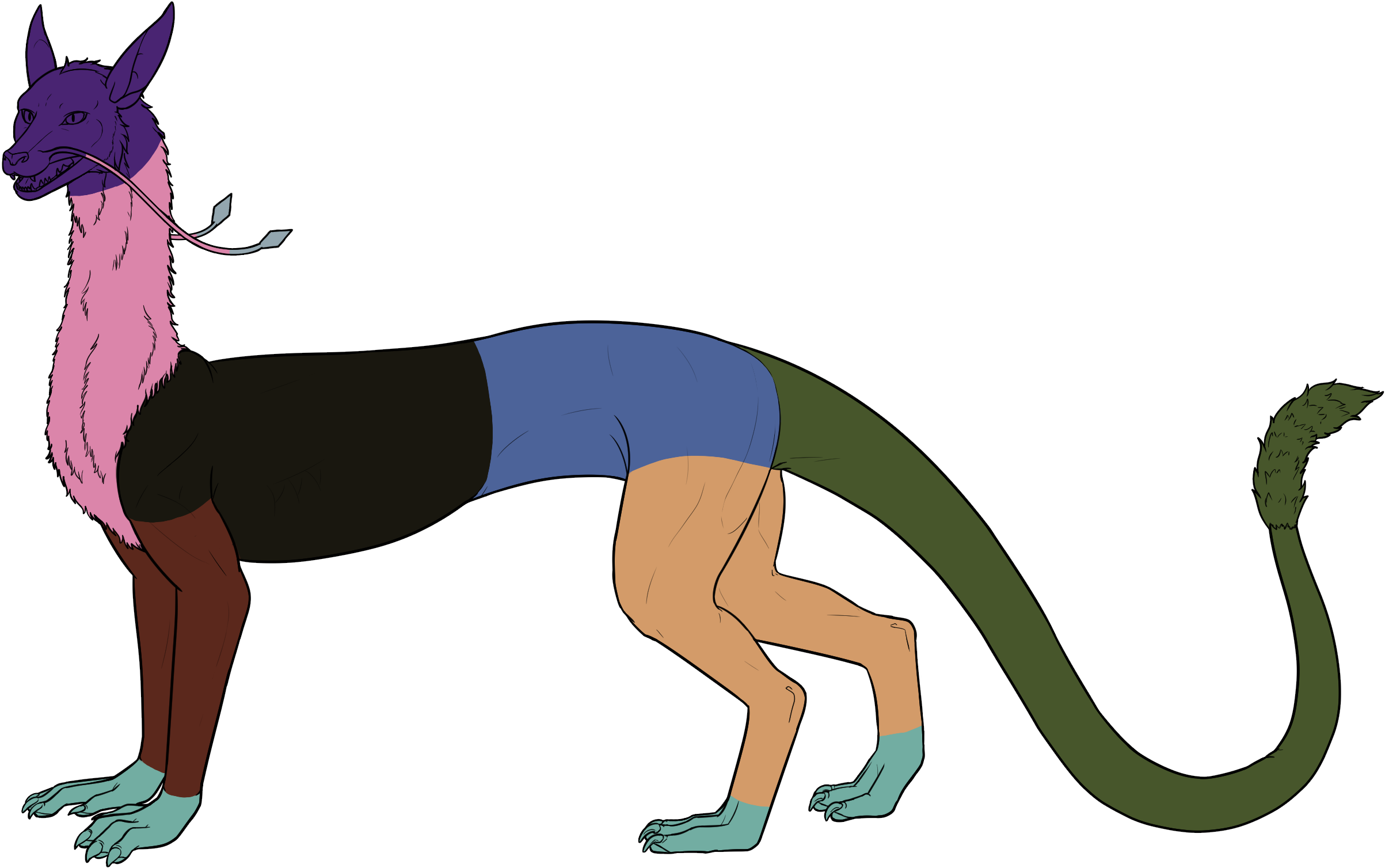
These are the types of energy for Kiji:
Minimal must cover no more than 10% maximum of the kiji. It should be no more than one section (Or around half of two sections) on the image shown. Keratin Energy will extend this to requiring around one full section, or around half of two.
Regular must have a total coverage of 20-25% of the kiji. This means it requires around two full sections on the image shown, or one full and two half. Keratin Energy will increase this to allowing 2-3 full sections.
Increased must have a total coverage of 30-50% of the kiji. This means it requires being in the majority of 3-4 sections on the image shown. Keratin Energy will make it require 4 whole sections, but can even be part of a fifth.
Maximum must have a total coverage of 50-75% of the kiji. This means it requires 4 whole sections at least on the image shown, but can be up to 5 whole sections spilling into 6. Keratin Energy will make it require over 4 sections, but it should not exceed 7 whole sections.
Magic Color affects the entirety of the character's allowed range, or 100%, but it also has special rules, such as allowing moving shapes inside the color patterns. This means it'll cover all markings, too. Keratin Energy makes this cover the entire design.
Energy Soul allows you to restrict the Energy colors to the eyes, and also optionally add Energy to the mouth and inner ears. This mutation is also the only way to add a subtle halo effect around the body, which must also match.
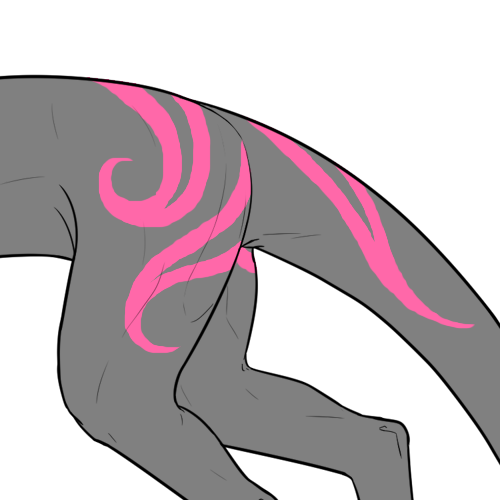
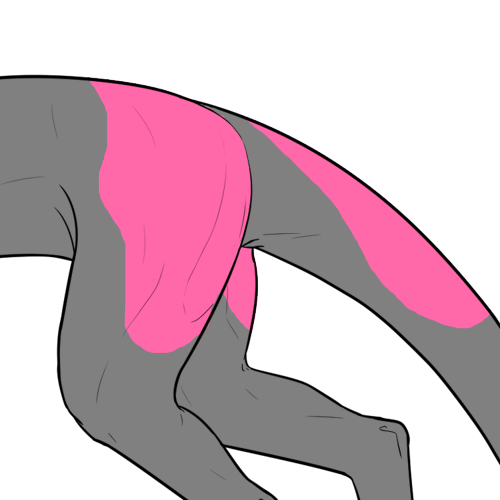
Sometimes we will allow exceptions to the above rules if it is a small patch of energy in multiple sections. This decision is up to the approval admin. If you disagree with an admin's ruling you can ask another admin to look it over instead.
Please also note that we don't judge percentages based on pixel coverage, but rather locations. The images to the left, despite one having much more pixel coverage, are considered the same basic coverage percentage. This is to help encourage people to be more creative with their energy designs instead of just making huge patches to satisfy the coverage requirements the kid might have.
If an admin says there's too much energy on your design to count for the energy type your kid has, it is recommended to remove sections entirely instead of trimming it down or thinning it out.
Also note that if the Kiji has wings, the number of sections required will increase by .5, or if Keratin Energy is present by 1.
The top side and bottom side of wings each are their own sections.
Mutations
There are three different subgroups for mutations: Color, Area, and Modifier. Energy Mutations are now limited to 1 color, 3 areas, and 2 modifiers per geno by default.
Color dictates the number of colors that can be used in the Energy, as well as how those colors interact. The following energy mutations are Color Types:
Regular Energy is default, and will not show in the geno traits or description. Regular energy is 1-2 colors.
Extra Energy allows for 3-4 unique colors.
Bloated Energy allows for 5-6 unique colors.
Maximum Energy allows for 7-10 unique colors.
Static Energy means the colors of the energy are locked in place and don't flow. Doesn't affect single color energy, obviously.
Split Energy means that colors may flow within 'locked' regions; for example you could have blue and black energy on the feet that acts like normal, and red and yellow energy on the tail, which also acts like normal, but these color ranges will never meet. Split Energy will act like Static if there are only 2 colors, but if there are 3 or more each region must have 2 or more colors with only 1 region allowed to have one color.
Area changes the shape and coverage of the Energy. For kijis, these are:
Asymmetrical Energy, which means the energy does not have to match on either side of the kiji.
Energy Soul allows you to change the eye color to match your Energy colors, and also optionally add Energy to the mouth and inner ears. This mutation is also the only way to add a subtle halo effect around the body, which must also match. The halo, eyes, and other parts affected by Energy Soul does not count towards percentage coverage.
Keratin Energy makes the effective range increase to full body essentially, since this allows for Energy to touch the mane, tail fur, body mutations, claws, inner ears, horns and other bone mutations, whiskers, or wings. Keratin Energy is not required to be shown in the design, however, meaning you can have the energy still restricted to the regular areas energy is allowed.
Thick Energy requires Energy to appear more concentrated, appearing in large, thick patches with little room for intricacy.
Thin Energy requires Energy to appear more detailed, appearing in small, thin patches with lots of blank space between lines.
Clipped Energy partially ignores the range required and clips the energy to a single marking. For Kiji, this marking must be a smaller marking if they have minimal energy or a larger marking if they have maximum energy, if possible. This does not cover the marking, but adds wisps of the energy to the marking itself. The marking must still be visible under the energy.
Modifiers change the property of Energy. These are:
Lackluster Energy, which removes Energy's ability to glow, however it means the energy must be that much more obvious in color or design.
Energy Trail, which allows Energy to leave faint motion-blurred trails or misty, smoke-like effects behind.
Tally-specific Rules
Coverage
Energy works differently between kijikaiaku and subtalleons. For tallies, the energy is restricted to the whole of the wings and tail fin unless there are energy mutations affecting it. By default, this is yellow range where energy must be on tallies:
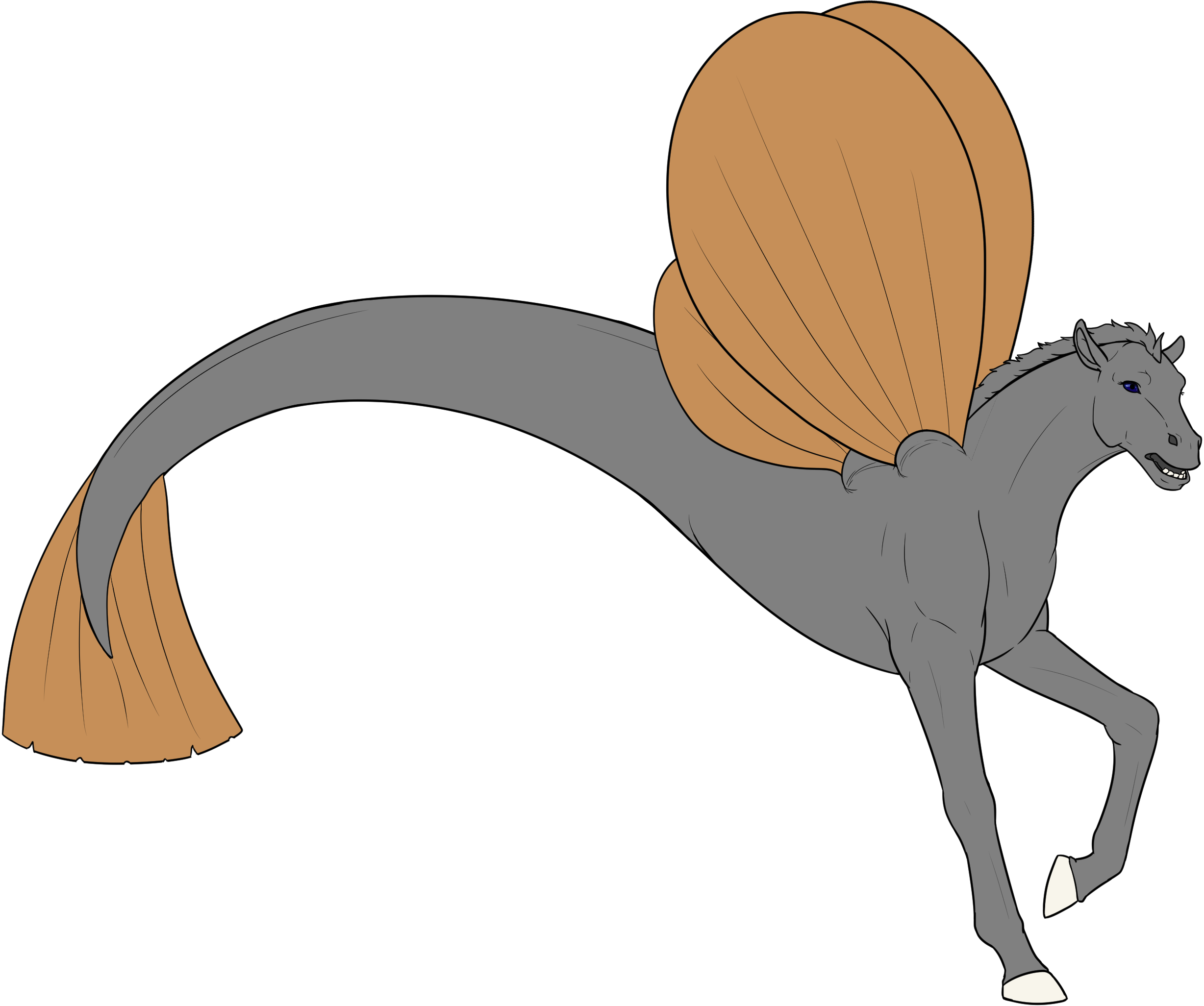
Energy can additionally optionally be on fins without the need to any additional mutations.
Unlike with Kijis, the entire range must be filled by default on the wings and tail fin with no gaps or holes. If the fins are affected, they also have to be the entire fin, minus the fin join base. Like Kiji though, by default the energy must be symmetrical in terms of its pattern and colors. It doesn't have to be exact, but it does have to be close enough.
Please note that unlike Kijis, Tallies Energy is naturally static, motionless. Because of this, we allow many different patterns and shapes, as long as it matches the energy type and mutations it might have. Just make sure that whatever pattern you do matches on the wings and the tail (And fins if you do them too.) Patterns can be hard-edged, soft-edged, or blended, and the colors do not have to be equal in coverage- in fact you can have one dominating color, while the others are quite minimal.
We understand that due to different shapes of differing tail and side fins, patterns cannot be exact between them and the wings. We ask that you still try to get the spirit of the pattern the same between the two. As long as clear effort is put in to make sure they look similar, we will accept it, but in the end it is up to the admin approving the design.
Also just to be clear, the energy cannot be on the wing join bases, without a mutation allowing it. Any glow off the wings would be overtop the wing join bases, so make sure your glow is not underneath them.
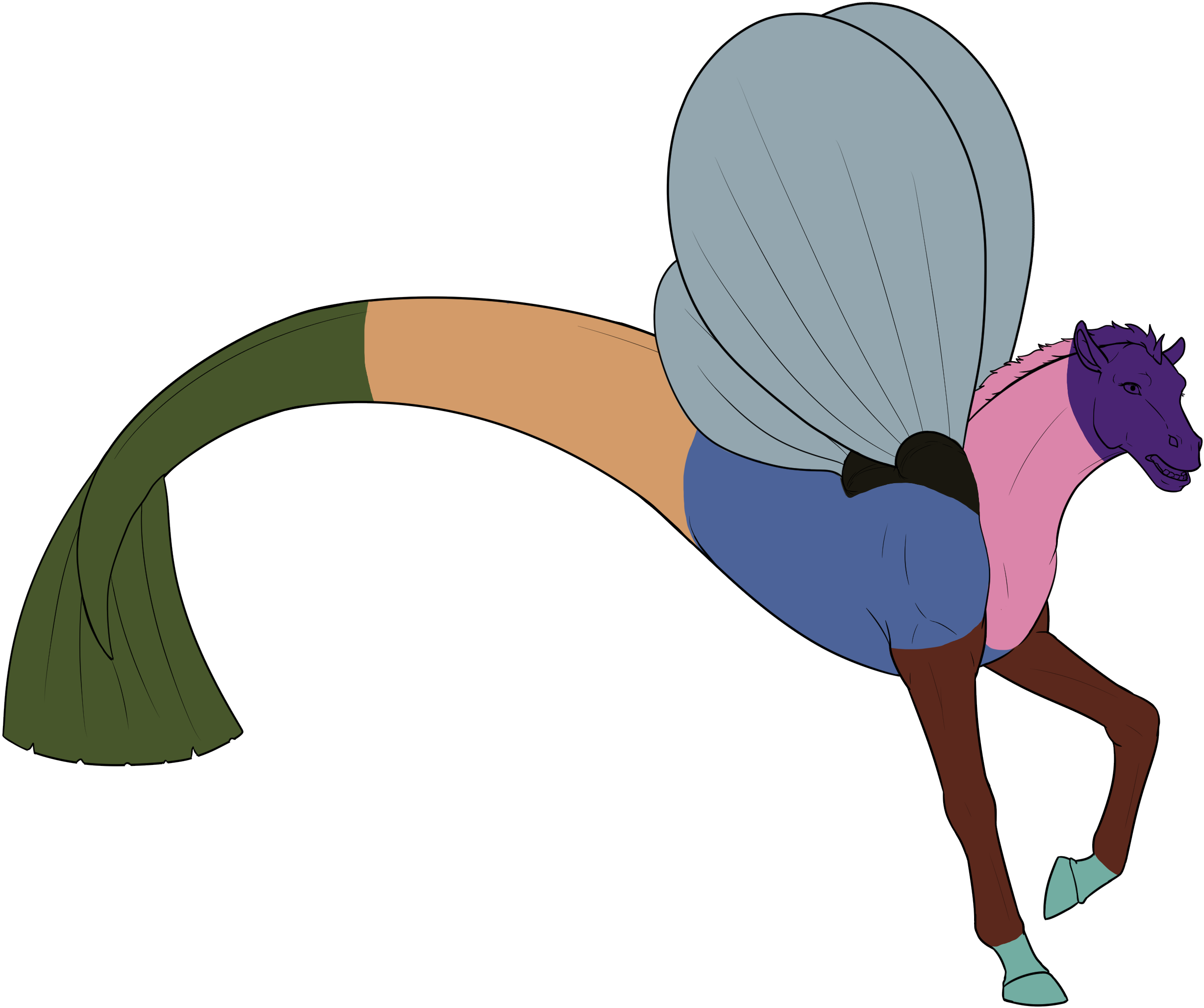
Types
A tally's energy type is color-based. It refers to how many unique colors is on the design, not the coverage like with Kiji. By default all areas should contain all colors.
These are the types of energy for Tallies:
Regular is default. Regular energy is 1-2 distinct colors total.
Extra allows for 3-4 unique colors total.
Bloated allows for 5-6 unique colors total.
Maximum allows for 7-10 unique colors total.
Magic Color is the same on Tallies as with Kiji, it affects the entirety of the character, but it also has special rules, such as allowing shapes inside the color patterns. The only difference is unlike with Kiji, it is static by default.
Energy Soul allows you to restrict the Energy colors to the eyes, and also optionally add Energy to the mouth and inner ears. This mutation is also the only way to add a subtle halo effect around the body, which must also match. Please note that Energy Soul as the energy type means there is no energy on the wings and tail fin, as it completely replaces it.
The image to the left is for reference in the case the Tally has Mimic Energy, listed in the mutations below. Depending on the other mutations it has determines the allowed minimum and maximum coverage, as detailed below. Please see the Kiji Energy Types for their coverage definitions.
Mutations
There are three different subgroups for mutations: Color, Area, and Modifier. Energy Mutations are now limited to 1 color, 3 areas, and 2 modifiers per geno by default.
Color dictates the way the colors/patterns are handled in the Energy, and how those colors interact. None will affect single color energy though. The following energy mutations are Color Types:
Regular Energy is default, and will not show in the geno traits or description. Regular energy is static, symmetrical, and contains the same number of colors in each range.
Simple Energy requires the pattern design to be simplistic.
Intricate Energy requires the pattern design to be complex and fancy.
Asymmetrical Energy allows for the colors on the wings and tail, while they must still contain the same colors, to not be symmetrical.
Mobile Energy means the colors of the energy flow similar to how Kiji's does.
Split Energy means that the colors and/or pattern on the wings and tail are different or contain different colors in total (However the wings and tail still must be symmetrical).
Area changes the shape and coverage of the Energy. For tallies, these are:
Extra Energy, which makes the energy bleed off the wings and tail onto the body.
Energy Soul allows you to change the eye color to match your Energy colors, and also optionally add Energy to the mouth and inner ears. This does not have to mimic the patterns chosen nor have to contain every color the rest of the energy has and can be less. This mutation is also the only way to add a subtle halo effect around the body, which must also match.
Keratin Energy allows the energy to be on the mane, horns, hooves, inner ears, and cheeks. If the Tally has Mimic Energy, however, the energy marking is allowed to be on the entire tally, including the mane, tail, ears, horns, etc. Keratin Energy is not required to be shown in the design, however, meaning you can have the energy still restricted to the regular areas energy is allowed.
Cut Energy allows the energy on the wings and tail to have holes or make shapes, removing the full range required restriction. The holes or shapes do not have to be symmetrical or the same on both the wings and tail, and cannot completely remove the energy from one range.
Mimic Energy moves the energy off the wings and tail and onto the body, mimicking regular Kiji energy. If they have Keratin Energy, it allows fullbody energy coverage. If they have Cut Energy, it acts as minimal, while if it has Extra Energy it acts like Maximum. If it has both it acts as Increased.
Clipped Energy partially ignores the range required and clips the energy to a single marking. For Tallies, this marking must be within or close to the regular range allowed, such as on the wings and/or tail, or if they have Extra Energy or Keratin Energy it can be around those ranges. This does not cover the marking, but adds wisps of the energy to the marking itself. The marking must still be visible under the energy.
Modifiers change the property of Energy. These are:
Lackluster Energy, which removes Energy's ability to glow, however it means the energy must be that much more obvious in color or design.
Energy Trail, which allows Energy to leave faint motion-blurred trails or misty, smoke-like effects behind.
Common Mistakes
Design Issues:
- Making Energy too geometric or mechanical - Remember Energy cannot replicate manmade structures, concepts, items, or real languages. It can mimic the concept of them, but cannot be identical to the items.
- Using colors that are too similar - Two shades of the same hue of blue that blend together when glowing won't count as "unique colors".
- Forgetting the glow effect - Energy must glow by default unless you have Lackluster Energy mutation.
- Making Energy symmetrical when you have Asymmetrical mutation - If you have the mutation, make sure to actually use it.
- Energy too similar to the base or markings - If we cannot tell what the energy is at a glance, it's likely too similar to the base. If it blends in too much, we will reject it.
Coverage Errors:
- Counting pixels instead of sections - Coverage is based on anatomical locations, not how much space the Energy takes up. If you need to add or remove more energy, try adding to/taking from a different region.
- Putting Energy outside allowed ranges - Check the reference images carefully for species-specific boundaries.
- Missing required coverage - Tallies must fill their entire wing/tail range by default; Kiji must meet minimum section requirements.
- Exceeding maximum coverage - Going over your Energy type's limits will result in rejection.
Mutation Misunderstandings:
- Combining incompatible mutations - Some mutations don't work together or override each other. If you're unsure you can always ask.
- Not using Split Energy correctly - Each region needs multiple colors (except one region can have a single color).
- Misunderstanding Energy Soul coverage - Energy Soul parts don't count toward percentage coverage requirements on Kiji; and if it's the energy type it overrides the energy on the body, but if it's a mutation it does not.
- Using Keratin Energy incorrectly - Just because you can put Energy on extra areas doesn't mean you have to- especially if you have Energy Soul as the type, this will override Keratin.
Submission Problems:
- Not explaining complex designs - If your Energy is unusual or borderline, add notes to help admins understand.
- Submitting alternate images without glow - If the glow effect makes it harder to see the distinct energy colors, please include a link to an alternate image without the glow for admins.
- Forgetting wing section calculations - Wings add 0.5 sections (or 1 with Keratin Energy) to requirements.
Common Questions
What is a region?
A region is a section of energy that is all connected ether literally or visually. Examples of this is a cluster of spots is a region, or a single continuous line, or perhaps a large patch, which are each their own region. If there's a design of energy on the face, and a bit on the tail, these would also be considered two regions.
What are unique colors?
When we say "unique colors," we mean visually distinct. So, while you can have two shades of similar yellow colored energy (A shade closer to white, and a shade closer to lemon) they can't be too close to each other that it's hard to distinguish one from the other. If the admin cannot see the differences they might reject it, so if the glow effect you're using is causing the colors to appear too similar we recommend sharing an image without the glow in the comments upon approval submission.
What do you mean when you say Energy must change between different art pieces?
For Kiji with multi-colored Energy (Unless they have Static Energy), the colors should flow and appear in different positions. This means when you do an image of the character, the colors should NOT be identical to the import, again, unless they have Static Energy or Split Energy within reason. As long as at least one section of the energy has the colors different, it'll be fine, but if they are identical they will get a small dock. We will also give a small dock if we notice you are doing the same change in every art.
This also applies to Tallies with Mobile Energy and multiple colors, but does not apply to regular Tallies, or Kiji with single colors or static energy.
How bright should the glow effect be?
The glow should be visible and obvious, but not overwhelming. It should look natural and not wash out the Energy colors or surrounding markings.
What counts as "manmade/inorganic" shapes I can't use?
Avoid real world text, symbols, mechanical patterns or items, items such as bottles, furnature, toys, building shapes, or anything that looks artificial rather than natural/organic.
Can I mix hard and soft edges in my Energy?
Yes! Energy can have any combination of hard edges, soft edges, and blended areas within the same design.
How do I know if my coverage is correct?
Use the section reference images and count locations rather than pixel coverage. When in doubt, ask an admin before finalizing your design.
What if my Kiji has wings - how does that change section requirements?
Wings add 0.5 sections to your requirements (or 1 full section if you have Keratin Energy). Each wing side (top and bottom) counts as its own section.
Can Static Energy still glow?
Yes, Static Energy only affects color movement, not the glow property. It will still glow unless you also have Lackluster Energy.
How does Split Energy work with multiple colors?
For Kiji, each region must contain 2+ colors that flow normally within that region, with only one region allowed to have a single color. If there's only two colors on the design, Split Energy acts like Static. Colors from different regions never mix.
For Tallies, it is similar to Kiji, each region must EITHER contain 2+ different colors, with only one region allowed to have a single color, OR have a different pattern. If it has a different pattern, the colors can be the same or different in each region. If there's only two colors on the design, Split Energy if forced to either have each section be a single color, or both colors with completely different patterns.
If the Tally has Mobile Energy, it'll act the same as Kiji's Split Energy.
What's the difference between Energy Soul's halo and Energy Trail's effects?
Energy Soul's halo is a subtle, static border or glow around the body. Energy Trail creates motion effects like mist or blur that follow movement.
How do I show Lackluster Energy as "more obvious"?
Use bolder colors, stronger contrast with the base coat, more intricate patterns, or larger coverage to compensate for the lack of glow.
How do I make sure the Arcane modifier is not mistaken for energy or vice versa?
Arcane affects a marking, so will always be along the edge of one, and can blend into it. Arcane can also only be one color. Energy will be separate from it and can be multiple colors. Make sure to make Eenrgy and Arcane distinct from each other if you have both, else the design might be rejected.
What if an admin disagrees with my coverage assessment?
You can ask another admin for a second opinion. If there's still disagreement, it's usually better to remove entire sections rather than trim existing Energy.
Can Energy overlap with other markings?
Energy appears above all other markings but can mimic their shapes. If a marking says it cannot be completely hidden, this applies to being hidden by energy as well.
How do I handle Energy on asymmetrical body mutations?
Energy should follow the mutation's shape while staying within allowed boundaries. Patterns may need to adapt to the new anatomy.
Can I submit multiple reference images?
Yes, please do! You can submit them as links in the comments, or separately after approval. They are especially helpful for showing Energy flow positions or energy colors without the glow.
What happens if I have conflicting mutations?
Some mutations override others (like Energy Soul changing coverage rules). Check the specific mutation descriptions or ask an admin if unclear.
How detailed can Energy be?
Very detailed, but ensure there's significant blank space between Energy elements and that it doesn't become too small to see clearly. The only exception to this is if a Tally has Simple Energy, in which it cannot be intricate or detailed.